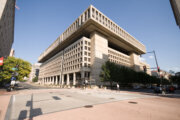If the bond market inverts, will your portfolio get upended?
Increasingly market pros today are talking about a flatter yield curve in the bond market. And as the curve flattens we come closer to a dreaded inverted yield curve and a likely recession, which would not be good for stocks or riskier bonds.
It might sound complicated when professional investors talk, but actually, it needn’t muddle your mind. Here’s what to look for and how to react.
[See: 10 Long-Term Investing Strategies That Work.]
How to read the yield curve. To analyze the yield curve, many investors look at the difference in interest rates between the two-year and the 10-year U.S. Treasury securities.
The two-year Treasury note yields 1.92 percent at the time of this writing, versus 2.47 percent on the 10-year note. That’s a difference of 0.55 percentage points.
A year ago, the two-year rate was 1.23 percent and the 10-year was 2.56 percent, a difference of 1.33 percentage points.
The lower difference in the rates (this year versus last year) is said indicate that we now have a flatter curve. If the difference was zero it is said to be dead flat.
The significance of the yield curve. “The yield curve is consistently a robust source of information about the economy,” says Stephen Wood, chief market strategist at Russell Investments in New York.
Typically, when the curve is steep it points to higher inflation, which in turn is often associated with faster economic growth in the years to come than in the immediate future.
Currently, the flattening curve has some worried about whether the economic outlook is as robust as some think.
“It’s peculiar if you think we are getting [faster] growth,” says Victor Sperandeo, CEO and general partner at EAM Partners in Dallas.
Slower versus faster growth is in some ways a good problem to have. What really worries investors is when the two-year rate is higher than the 10-year rate. When that happens, the curve is inverted. There is a long and consistent history showing that when the curve inverts, then the risk of an imminent recession is high. Investors almost always get nervous during recessions.
An important nuance. Of course, history tells you what happened in the past and sometimes the world changes. For most of the last decade, the Federal Reserve pursued unorthodox policies that changed the nature of the bond market. Rates have been ultra-low and the Fed owns a lot of bonds.
[Read: TIPS Are a Hedge Against Inflation.]
Just as what the Fed put in place was unprecedented, so is the unwinding of those policies. And the question remains: will the yield curve still provide a useful indicator to investors?
The best guess is that it will be a good metric, but it is still wise to be cautious. That means when the curve inverts you also need to look at other data to confirm whether a recession really is about to happen.
One great indicator to help clarify the situation is the growth of commercial loans, which while still positive, has been slowing down over the past few months, according to government data.
“The slowdown in loan demand is a concern,” says Jack Ablin, chief investment officer at BMO Private Bank in Chicago. That’s because when businesses take out more loans you can be fairly sure that the economy will grow. It works the other way around as well — when industry borrowing contracts, it is likely that the economy will follow suit.
How to invest? When the yield curve does invert, then you need to be ready to switch your investments.
“From a stock perspective, an investor should reduce exposure to volatile segments of the market like emerging markets and cyclical stocks,” says Richard Rosso, director of financial planning at Clarity Financial in Houston. Cyclical stocks include those in the materials business, such as mining companies, as well as banking and technology.
Instead, look for utilities or consumer staples stocks, he says. Staples include the things that consumers need to buy regardless of the state of the economy, such as soap and toothpaste.
To fill those needs investors might consider the Utilities Select Sector SPDR exchange-traded fund (ticker: XLU) and the Consumer Staples Select Sector SPDR ETF ( XLP)
They hold baskets of utility stocks and consumer staples equities, respectively. The annual expenses for either fund is 0.14 percent, which equates to $14 per $10,000 invested annually.
Rosso also says that bigger firms tend to do better than smaller ones in a recession. Corporate scale simply means that most big companies are more robust than most little ones. Think of it like vessels on the ocean — a kayak gets tossed around on the waves, whereas the aircraft carrier is more steady.
“When it comes to fixed-income, stick with the highest quality corporate bonds and reduce exposure to high-yield or junk,” Rosso says.
[See: The 10 Best ETFs to Buy for 2018.]
A good place to start for high-quality bonds is the Fidelity Corporate Bond ETF ( FCOR). It holds a basket of corporate fixed-income securities, more than 96 percent of which are high quality, otherwise known as investment-grade. The fund has annual expenses of 0.45 percent.
Government securities are also a good bet but currently, yields on U.S. Treasurys are historically low and might not keep up with inflation over long periods.
More from U.S. News
11 of the Best Fixed-Income Funds to Buy
9 Ways to Invest in America With Bond Funds
The 9 Best Municipal Bond Funds for Tax-Free Income
Why an Inverted Yield Curve Signals Financial Disaster originally appeared on usnews.com







